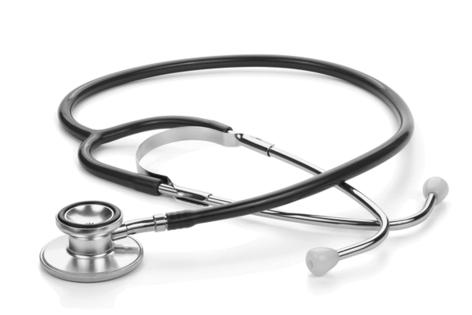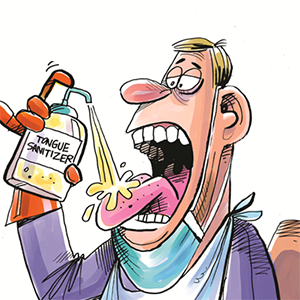Healthy Men: Men's Health Month: Why it matters more than ever
Published in Health & Fitness
This June, like every other, has been filled with talk of graduations, the scent of barbecue and Fathers’ Day sales. But amid all the hype, we need to remember that June is also Men's Health Month – a vital, often overlooked, opportunity to shine a spotlight on the unique health challenges and preventative care needs of men. More than that, it’s a critical time to urge men to prioritize their health and encourage their loved ones to support them in doing so.
Many men, thanks to societal expectations, lack of awareness or both, are about half as likely as women to have a regular health care provider, less likely to have regular screenings, and are far more likely to delay seeking medical attention until symptoms become unbearable. As a result, men are often diagnosed when their medical issue has already become advanced and may not be able to be treated at all (this appears to be the case in Joe Biden’s recent diagnosis of metastatic prostate cancer). Understanding the top five health concerns for men is the first step toward proactive health management and longer, healthier lives.
1. Heart Disease: A Silent Killer
Heart disease is still the leading cause of death for men in the U.S. (and globally). Risk factors include blood pressure and cholesterol, obesity, smoking, and a lack of physical activity. The scariest part about heart disease is that symptoms are often subtle or entirely absent, which means that in many cases, the first symptom is a heart attack or stroke. Regular checkups, including blood pressure and cholesterol screenings, are absolutely essential. As are a heart-healthy diet rich in fruits, vegetables, and lean proteins and regular, physician-approved physical activity. At the same time, men and those who love them need to be aware of possible warning signs, such as unexplained chest discomfort, shortness of breath or unusual fatigue, and report them immediately to a health professional.
2. Cancers: Beyond the Expected
Cancer is the second leading cause of death for men. Within that broad category, cancers of the lung, prostate, colon and skin are among the most common. Testicular cancer is less common overall but it the most common in young men, ages 15 and 35; caught early, it has a very high cure rate. In fact, “catching it early” is the key and the way to do it is with regular screenings: routine testicular self-exams, colonoscopies for colorectal cancer, regular PSA testing, and regular visits to a health provider to establish baselines and track changes over time. Lifestyle is equally important, and includes avoiding tobacco, maintaining a healthy weight and limiting alcohol consumption.
3. Suicide: The Hidden Crisis
Perhaps the most tragic and often overlooked men’s health issue is suicide, with men accounting for roughly 80% of them. Men are socialized to be strong, resilient and emotionally stoic. That often leads to dangerous suppression of feelings, making it incredibly difficult for them to acknowledge struggles with depression, anxiety or overwhelming stress, let alone seek help. It also leads to a wildly disproportionate death rates of “diseases of despair,” such as alcohol- and drug abuse and opiate overdoses. Men's Health Month provides a perfect opportunity to confront the stigma around male mental health by encouraging honest conversations about emotional well-being, and nonjudgmentally supporting men who seek professional help (therapy, counseling, medication). Help is available 24/7 by calling or texting 988.
4. Diabetes: Far-Reaching Consequences
Type 2 diabetes is a growing epidemic, and men are at a particular disadvantage, often developing the condition years earlier than women. Left unmanaged, diabetes can lead to severe and debilitating complications, including increased risk of heart disease and stroke, kidney failure, nerve damage, vision loss and even erectile dysfunction. Regular blood sugar screenings, particularly for men over 45 or those with risk factors like obesity or a family history of diabetes, are essential. As mentioned, a healthy lifestyle and regular physical activity can be incredibly effective in preventing and managing the disease.
5. Accidents and Unintentional Injuries
While not a disease, unintentional injuries account for a significant portion of morbidity and mortality among men, particularly younger age groups. This category encompasses a wide range of incidents, including motor vehicle accidents, falls, poisonings and drug overdoses. Men are statistically more likely to engage in risk-taking behaviors, which contributes to their higher incidence of severe injuries. Promoting safety consciousness, adhering to traffic laws, avoiding impaired driving, practicing safe recreational activities, and being aware of and mitigating occupational hazards are all vital preventative measures that can drastically reduce this burden.
Ultimately, Men's Health Month is about fostering a culture where men feel empowered to take charge of their health, where prevention is prioritized over crisis management, and where seeking help—whether for a physical ailment or a mental challenge—is seen as a sign of strength, not weakness. So, as June unfolds, let's truly embrace the profound importance to all of us of celebrating and safeguarding men's health.
©2025 Tribune Content Agency, LLC










Comments